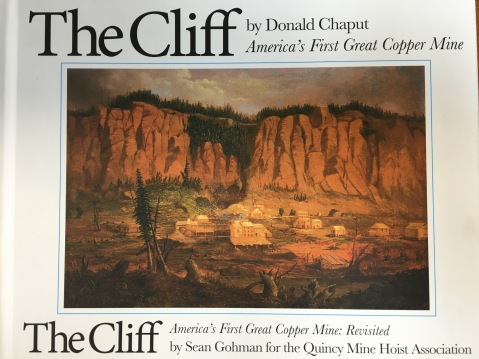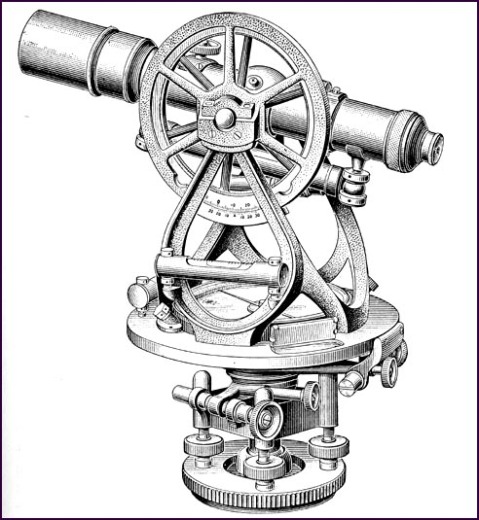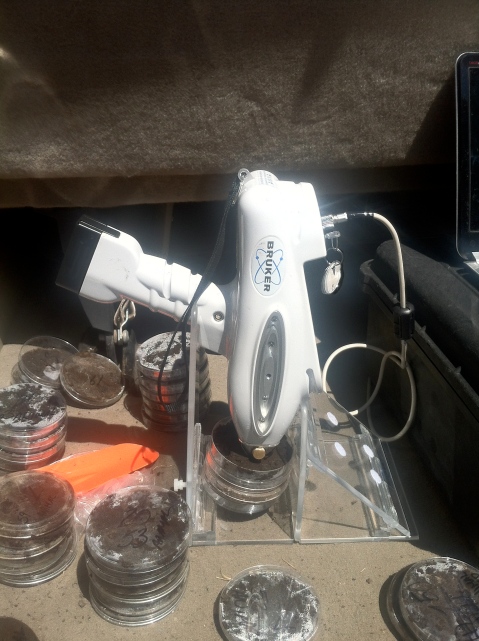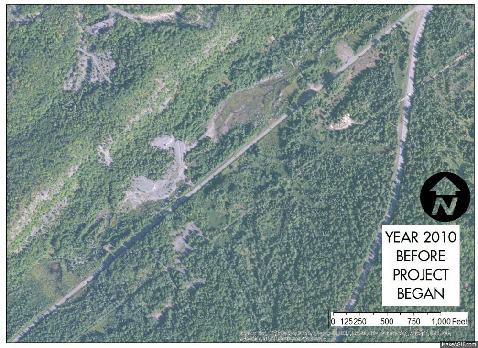Reissue of The Cliff: America’s First Great Copper Mine, now available. And a new blog.
This gallery contains 3 photos.
This is actually old news now but I realized I forgot to post something here. I don’t update this blog anymore, so it slipped my mind. If have set up a new personal blog, The Industrious Archaeologist blog at seanmgohman.com (that still covers/will cover a lot on Cliff) for anyone interested in following along. It’s […]
2014 Student Blog Post #5: Daniel Schneider
This gallery contains 36 photos.
Finding Meaning in Cemeteries My name is Daniel Schneider. I am entering my second year of studies in the Industrial Archaeology program here at MTU. My research interests relate to the transformation of nineteenth century artistic skills within the context of industrialization. Blog readers living in the Copper Country may know me from my work […]
2014 Student Blog Post #4: John Arnold
This gallery contains 4 photos.
My name is John Arnold and I’m a Ph.D. student in Michigan Tech’s Industrial Heritage and Archaeology program. I’m an architect by training and until recently had been practicing in Washington state, before returning to school to study Historic Preservation at the University of Oregon, where I focused my studies on the 3D digital documentation […]
2014 Student Blog Post #3: Alexander Whydell
This gallery contains 3 photos.
My name is Alexander and I’ve just completed my first year of my undergraduate studies at Michigan Technological University. I’m excited to learn about archaeology and was glad I could enroll in the field school without having taken too many required intro courses first. Like others on the research crew, I’ve spent the first few […]
2014 Student Blog Post #2: Steven Sarich
This gallery contains 7 photos.
Elemental Fingerprinting Using Portable X-Ray Fluorescence My names is Steven Sarich and I’ve just completed my first year in the Industrial Archaeology MS program at Michigan Technological University. I began my academic career at the University of Nebraska-Lincoln graduating with a degree in anthropology with a focus on archaeology. My interests are primarily in work […]
2014 Student Blog Post #1: Daniel Conner
My name is Daniel Conner and I am a guest student of the summer field school at the Cliff and Clifton. I am a Flint, Michigan, native and a junior History major (with a minor in Anthropology) at the University of Michigan-Flint. If you don’t already know, Flint is the Vehicle City, the birthplace of General Motors. While horse and horseless carriages are a whole different type of industry than Native American and 19th century copper mining, it has much in common with the core of what industrial heritage means to people. Each industry grew on the backs of their workers, resulting in labor strikes, including the Copper Country Strike of 1913 – 1914 and the 1936 – 1937 Flint Sit-Down Strike. As a result of all of this local history around me growing up in Flint, I became fascinated with the rise and later fall of automotive industry in the community, as well as its humble beginnings.
So with my undergraduate experience soon coming to an end, this past winter I started looking for unique ways to spend my summer. Always having been interested in archaeology, a quick google search of “archaeology field schools in Michigan” soon revealed the Social Science department of Michigan Technological University, the summer field schools, and Industrial Archaeology. Checking with my university’s schedule and the needed requirements to be a guest student for the summer, I soon began planning for this unique experience. And with that, I became the first student to contact Dr. Scarlett about the 2014 Field School, months in advance back in January. I finally arrived in Houghton a couple of days before class started on May 12th.
Since I was the first student to register for the class, it is appropriate that I’m also the first student to write a guest blog about the 2014 field season! If you don’t know much about the Keweenaw, they had 340.5”of snowfall so far this season. (That’s more than 28 feet or 8.65 meters of snow!) Due to the heavy and deep snowpack, for the first two weeks we went on a number of focused learning excursions away from the site.
We took several field trips to learn geology and mining history, including a visit to the Porcupine Mountain State Park in Ontonogon County, where we hiked first to the Lake of the Clouds lookout and then finally spent the majority of the day looking at various locations within the park grounds where mid-nineteenth century copper mining took place. Some of these locations turned a tiny profit for the entrepreneurs that led the search of copper in the hills, some did not make money and were a loss in time and energy. We did happen to wander onto some remnants of an era gone by, however, and got to see the productive end of how hard work paid off and what is now left as a result of the success.
On another trip, we completed the “Keweenaw Loop,” a geology-concentrated drive around the peninsula that began in Houghton with the Boulder Garden at Michigan Tech. From there, we went on to the Keweenaw “spine” at Cliff Mine, to Brockway Mountain and Copper Harbor, and back along the southern shore to the stamp sands in Gay. If you are interested in geology, you should check out the Keweenaw Geoheritage website!
These two trips grounded us with a foundation in the history of the Copper Country starting with it’s very bones. By seeing both cultural and natural impacts uponthe environment in which we live, we got to see first hand what happened in the past, through examples in archaeology, geology, or history.
Background of Cliff Mine, Clifton, and the cemeteries
Readers of this blog know that the Cliff Mine was operated by the Pittsburgh & Boston Mining Company. One of three land leases, it was by far the most profitable for the company after sinking tens of thousands into their previous attempt nearer to their office at the tip of the Peninsula.
In 1845, the Cliff “vein” was discovered and as the History tab in this blog already notes, no mine in the Keweenaw Peninsula was more productive from 1846 – 1858 for their investors, paying to the tune of $2.5 million dollars. Just to put it in perspective, with the recent inflation calculations of 2014, that investment payback would have been worth between $71-$73 million dollars today. This payout made the Cliff Mine nationally known and famous especially in Michigan and locally in the Keweenaw.
The years after 1858 began the start of decline at the Cliff in profitability. After the Civil War, with the depth of the mine already reaching nearly one thousand feet and the lode now looking like it was arching north under the cliff, management soon realized that further efforts did not make financial sense. By 1870, the original company sold the mine and miners started to look for work elsewhere.
As the mine slowly died away, so did too the community that had grown up around it. With a once plentiful immigrant population reaching nearly 1,500 people, the ethnic diversity showed greatly in its community activities, organizations, and churches. As Clarence J. Monette noted, Clifton had a wide variety of communal societies and events including branches of Order of Good Templars and Order of the Odd Fellows, a juvenile group, the Band of Hope, and Cornish wrestling & poll climbing clubs. To support this diversity, three churches were created, a Cornish-Methodist, an Episcopal, and the Roman Catholic[1]. These churches not only served the living, but also located the dead, as they supported separate cemeteries. There are two cemeteries at Cliff: Hillside, which was the protestant cemetery on a hill overlooking the original 1840’s settlement, and one that was platted alongside St. Mary’s Catholic Church.
For most of the mines’ existence, these two cemeteries were the primary resting spots of those who died in the mine and in the community. From the 1850’s up until 1890, these cemeteries, were actively used for burials. Evergreen Cemetery in Phoenix came under the care and ownership of Cliff Mine and as the community disintegrated, graves were moved and reinterred there, since Phoenix and Eagle River, which were both more populated places by then.
This Field Season
This has been a field season of constant unknown, more so than most relative archaeology field schools. Its not always about unpredictable weather, since some other project plans did not work out in a timely manner. We have been malleable, free form, and adaptable. The professors have been talking about the research process and how a professional must be able to design fieldwork according to major research questions, within ethical and legal frames, and under real budgetary constraints, while also accounting for weather and other unpredictable factors.
This season, we’ve been able to finish work started in 2013 and look at some entirely new areas of the site. We are continuing excavation of Trench 54 North, within the grounds of what has been hypothesized as a butchering area due to the large number of animal bones within the proximity. In addition, we have mapped two of the three Cliff cemeteries for the first time. They had not yet been surveyed during all the previous seasons. Some of my peers will write about the cemetery studies.
The techniques that have been used in these past weeks, have included learning to make maps by triangulating with tape measures, degree-and-distance with magnetic compasses and an optical transit, and digital mapping with GPS and an EDM Total Station. Beginning with Hillside and the Catholic cemeteries, we drew base maps from scratch using metric tapes and the optical instrument. While teams then inventoried and recorded the monuments and markers, a team with the digital mapping tools came through to lock our hand drawn plan into the Cliff GIS. We have also used the pXRF on soil samples taken near the Clifton trenches in what the team thinks is a building foundation and an animal pen. In the upcoming blogposts, you will read from others like myself in this years 2014 Field School on what we are learning, experiencing, and the possible results that could culminate through these practices.
Thank you for your continued readership and support of our ongoing archaeology and research efforts. It is your comments and memories that inspire us in our work, showing that even in looking to the past impacts the present and future. We’ve already run into several groups of people visiting the site who had ancestors working there and one of the historic photos provided by a family may be key in helping us link specific families mentioned in the census to specific buildings now mapped in our GIS!
[1] Monette, Clarence. Clifton and the Cliff Mine. Greenlee Printing Company. Calumet. 1999.
[2] Blog entry, April 29, 2010
[3] Lee Presley, 2014
Five Years on the Cliff
This gallery contains 2 photos.
The 2014 field season marks the 5th year of the Cliff Mine Archaeology Project. The anniversary provides an opportunity for a brief assessment of what we’ve accomplished in our studies of this significant historical site, as I start to post the field team’s new blog posts about the current work. The project began during the […]
Visualizing the map in progress, 2010-2014
This gallery contains 1 photo.
The vast majority of data was collected in 2010 and 2012, as those were years where primary focus was on mapping Cliff and Clifton, respectively. In 2011, 2013, and this year, mapping is secondary, though what has been mapped has filled in the edges somewhat. The 2014 season is not over, and the focus is […]
What was (and is now) the ‘Function/Use’ of the Cliff?
So the property has a classification and (at some point) will have a hard number of contributing and non-contributing resources that go into that will help support its nomination… and in this next step, the assignment of past and current Functions/Uses. It’s important to list what a property’s current state of use (or function) in […]
The Classification of the Cliff Property
So now we’re getting into the nuts and bolts of the National Register Nomination forms. It’s the part of the process that is very important in terms of how the property will be viewed by potential owners/caretakers from now on. Again, this step in the process is seemingly simple and straightforward, but in reality it […]










Recent Comments